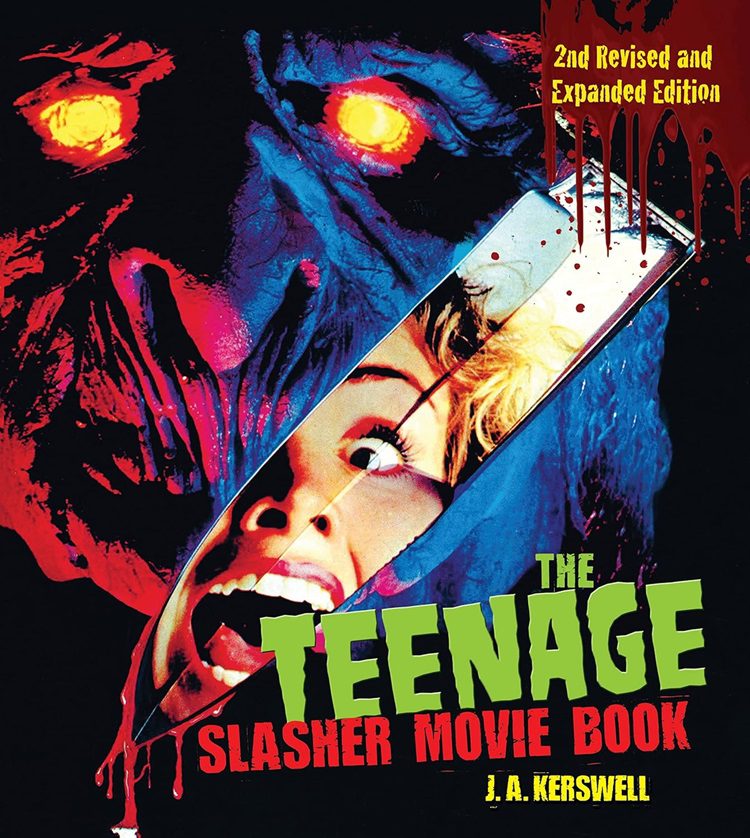
Before the late ’90s-early 2000s revival of horror as a mainstream money maker (thanks largely to Scream and the new slasher boom which followed), there were four big modern boogeymen of horror: Freddy, Jason, Michael Myers, and, to a lesser extent, Leatherface. Sure, other monsters came and went, and had whole series playing out on direct to video, but those four guys all got theatrical releases. They had mainstream patina: hell, two of them got TV shows. It’s one of the oddities of the horror genre that it’s the villains, not the heroes, who make the series. Halloween is not the Laurie Strode series. If I asked you who Nancy Thompson was, only the most dedicated of horror fans would know she was the Final Girl in Nightmare on Elm Street (and only reappeared in Nightmare on Elm Street 3, though the actress Heather Langenkamp starred as herself in New Nightmare, for my money the best in the whole series.)
This is a kind of paradox, because horror is, at its best, an exploration of the unexpected and terrifying. But when people go to see a franchise horror film, like many will be going tonight to see the new Halloween (2018), it will be because of the murderer. That is not a paradox raised in particular by the second edition release of The Teenage Slasher Movie Book, by J. A. Kerswell, but it is one of my recurring thoughts when I revisit this gleefully disreputable, but indisputably provoking genre. After all, those four major movie monsters were born in slasher films, a genre which, like its villain stars, is often killed but never stays dead.
J. A. Kerswell is the founder of the slasher movie review website The Hysteria Lives! and co-host of the related podcast, The Hysteria Continues! He’s been an enthusiast for the genre since childhood, and has also contributed commentaries to DVD and Blu-ray releases by Arrow Video and Vinegar Syndrome for many slasher films. The Teenage Slasher Movie Book, published by CompanionHouse books, is an updated reprint of a book which was previously published in the U.S. as The Slasher Movie Book and in the UK as Teenage Wasteland: The Slasher Movie Uncut.
The Teenage Slasher Movie Book is just what it sounds like: a popular history of the genre, written from an enthusiast’s perspective. It’s an overview of slasher films, an exploration of their origins, and a film guide for the heyday of the slasher – 1978 – 1984 – from the Ur-film (and still perhaps the shining example of the genre) John Carpenter’s Halloween to the schlocky nadirs of ’82-’83 and then the transformation of the slasher into something quite different with the 1984 release of Nightmare on Elm Street.
The slasher film is a visceral genre: it is about thrills at the most primal level, without too much going on in the brain’s department, by design. This kind of visual storytelling has its deepest origins in the late 19th century horror theater, the Grand Guignol: a French theater that specialized in the grotesque and the gory. These live plays had many aspects that became staples of the slasher genre already in place: mad murderers, female victims, and gore, gore, gore. From there, Kerswell takes us on a whirlwind tour of horror cinema from the atmospheric films of Val Lewton to one of the prototypes of the slasher: Hitchcock’s Psycho. That film, with its surprise murders and twist ending, was surely the major influence on much of what became the slasher genre. Another parallel with more modern slashers: Psycho was made quickly, and cheaply, because after Vertigo was a commercial failure, Hitchcock needed something that would rescue his reputation as a money-making filmmaker.
Italian giallo films and (before reading this, something unknown to me) German krimi also contributed elements to the slasher – the costumed murderer, the point-of-view killings. And while a few films combined these disparate influences before, it wasn’t until John Carpenter’s Halloween that they crystallized into a distinct genre, one that met with mass commercial success.
While not uncritical, Kerswell’s book is unabashedly enthusiastic about not only Halloween, but the many films that followed. Few came close to rivaling that film’s artistic success: most slashers were happy to spread boobs and blood across the screen. The author goes year by year, detailing the movies released (mostly in the U.S. and Canada, where the genre held the most sway) and takes us from the few heights to the many, many depths of the genre. Most movies get a paragraph or two, with brief synopses and some highlights of the thrilling kills that await the willing audience.
The Teenage Slasher Movie Book is beautifully produced. It is in full color, and lavishly illustrated on almost every page with international movie posters, movie stills, and other promotional material related to the films. It can’t be said to be completely comprehensive, since the dawn of direct-to-video and later -to-DVD horror movies has created an avalanche of films too numerous (and, given most of their quality, completely pointless) to name. But I can’t think of a major U.S. or Canadian genre film Kerswell has missed, and other countries releases are mentioned, if not in as much detail. There’s also a helpful index in the back listing the movies covered by title. It’s not the book to change anyone’s mind about the slasher film, but Kerswell’s enthusiasm is infectious, and even when he’s critical, it is clearly out of affection, not scorn. The Teenage Slasher Movie Book is a great addition to any horror film fan’s library.